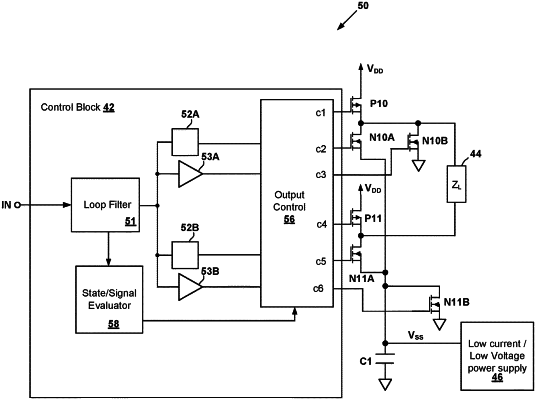| CPC H03F 3/2178 (2013.01) [H03F 1/26 (2013.01); H03F 3/187 (2013.01); H03F 2200/03 (2013.01)] | 22 Claims |

|
1. A class-D amplifier circuit, comprising:
a first driver circuit including a first high-side switch coupling a first output of the class-D amplifier to a positive power supply and a first low-side switch coupling the first output of the class-D amplifier to a negative power supply;
a second driver circuit including a second high-side switch coupling a second output of the class-D amplifier to a positive power supply and a second low-side switch coupling the second output of the class-D amplifier to a negative power supply; and
a control circuit having an input for receiving an input signal to be reproduced by the class-D amplifier circuit, the control circuit having a first output coupled to an input of the first driver circuit and a second output coupled to an input of the second driver circuit, wherein the control circuit includes one or more modulators and selects between actively operating a selected one of the first driver circuit or the second driver circuit or both the first driver circuit and the second driver circuit according to the signal to be reproduced, while setting an unselected one of the first driver circuit or the second driver circuit to turn either a high-side switch or a low-side switch of the unselected one of the first driver circuit or the second driver circuit fully on for at least some cycles of the one or more modulators.
|